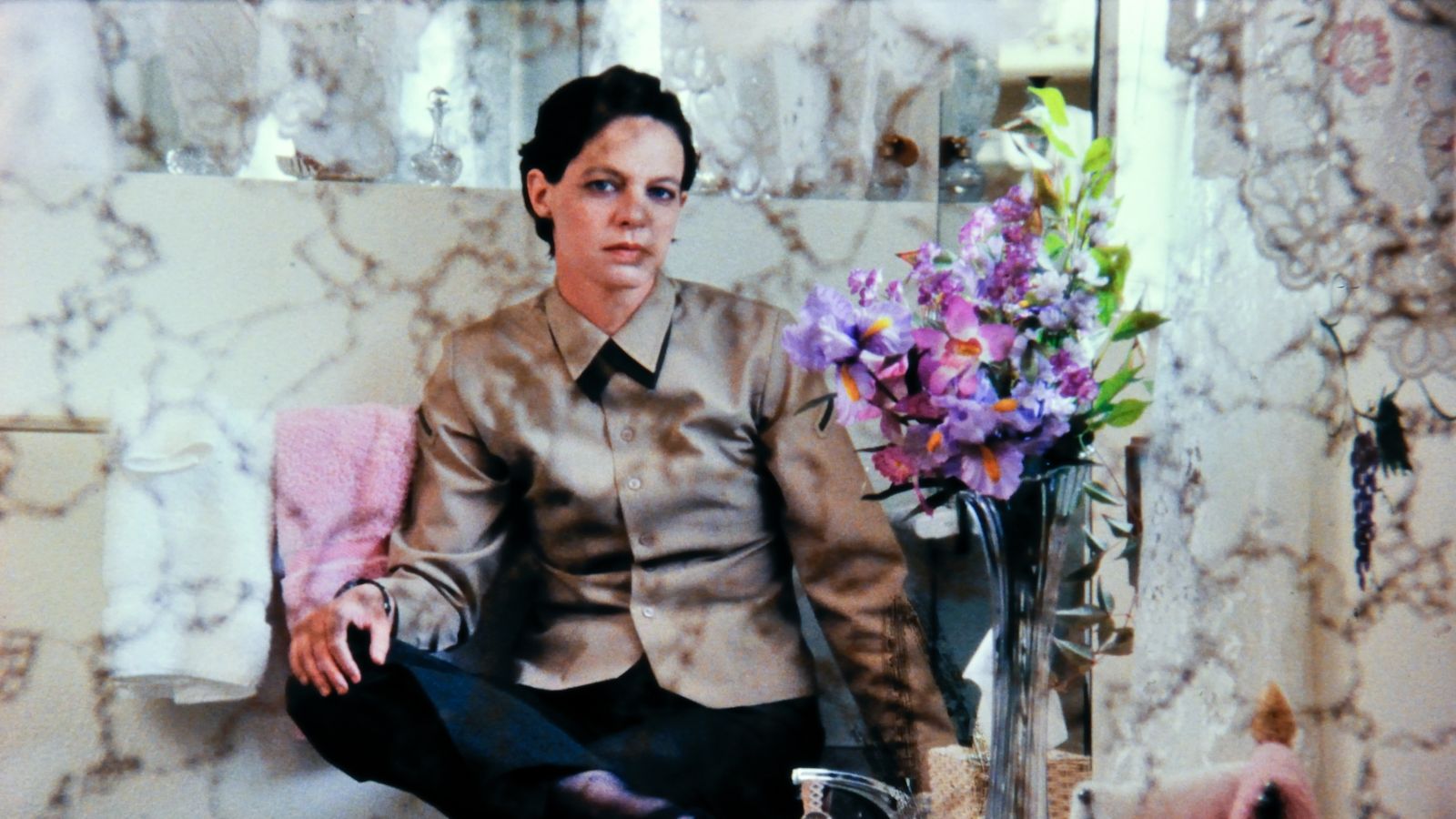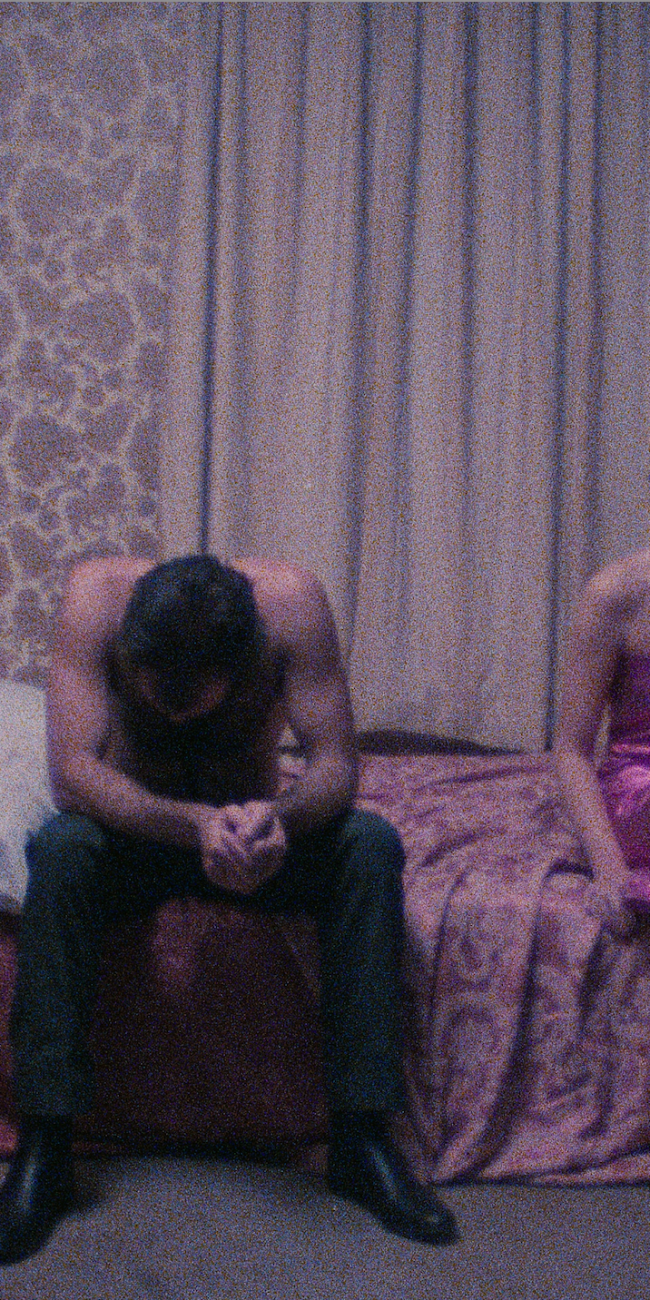THE BLOODY CHILD

(Nina Menkes will be honored with a comprehensive retrospective at BAM March 4-10 and the American Cinematheque March 12-26. Additional cities to be announced. Ray Lobo has this movie review of The Bloody Child. Join the conversation with HtN on our Letterboxd Page.)
A few days ago my colleague Jonathan Marlow reviewed the restoration of director Nina Menkes’ Magdalena Viraga. Restorations not only give one the opportunity to a appreciate a film in the context of restored visuals, they also give one a chance to reassess a director’s early films and how they cohere with a body of work. Even though The Bloody Child was released one decade after Magdalena Viraga, we see Menkes’ signature touches in both films. The first of Menkes’ early trademarks involves the casting of Nina Menkes’ sister Tinka Menkes. The second is Menkes’ idiosyncratic way of fracturing a narrative timeline. Menkes not only reverses the timeline of events in The Bloody Child’s central narrative, she also fractures said narrative by adding other visuals that form a constellation around the central story. While this technique may sound disconcerting on paper, Menkes makes The Bloody Child into a sort of cubist painting wherein we get to experience various perspectives of the same subject.
This begs the question: What is the subject Menkes is exploring in The Bloody Child? My use of the word “subject” involves both word play and irony. In other words, Menkes’ central concern in The Bloody Child revolves around how women are often treated less like unique subjects and more like objects serving as recipients of male violence. It does not take the viewer much time to realize that a US Marine has murdered a woman. Other Marines, led by a Marine captain played by Tinka Menkes, discover the murderer trying to dig a grave. As we track the non-linear story of the murder, we catch bits of overlapping dialogue. The male Marines who have converged on the scene with the apprehended murderer just idle about and make comments such as, “maybe she was cheating on him or something.” The implication being that the victim likely deserved it. We also hear the ethereal voices of young girls delivering childhood rhymes: “Mirror Mirror on the wall, who’s the fairest or them all,” and “Fair is foul, foul is fair.”
While the murder is the central story that holds The Bloody Child together, that murder is merely a glue that holds together something larger. Menkes gives us visuals of an ashen woman in a forest. It is unclear if she is a specter or a cadaver. Said woman makes marks on her body with a stick. We are also given scenes of Tinka Menkes in an unidentified Muslim locale, all of which establishes a connection with the Biblical and Koranic story of Lot/Lut. But by far the images richest in meaning involve drunk US Marines at a bar and men dancing in highly suggestive ways in front of women at a country western bar. Both the Marines at the bar and the men at the country western bar are anthropological studies of masculinity in its most raw, misogynist, and violent natural element—we see a fight break out between two Marines. Make no mistake, the behavior of these men is performative. They are performing in prescribed masculine ways for other men and for the women they are trying to woo. Performative or not, there is a toxicity inherent in this behavior, a toxicity that may have contributed to the murder of a woman.
Menkes’s recent documentary on the male gaze in cinema, Brainwashed, premiered at this year’s Sundance Film Festival. By using clips from many films, Menkes makes her thesis clear in: cinema’s treatment of women in film is a product of the larger patriarchal culture and at the same time perpetuates and produces more visual objectifications which reinforce patriarchal culture. With The Bloody Child, Menkes was already working these ideas through. The Marines in the bar and the men at the country western bar talk about women in objectified terms. Ironically, Tinka Menkes’ character’s rank is the only thing that forces her Marine underlings to address her as ma’am. If it were not for the military’s obsession with rank, or respect for the uniform, the implication is that Tinka Menkes’ character would likely be seen as just another body, an object. The argument can be made that there is a wide chasm between misogynist language, especially by a group of drunk men at a bar, and physical violence–much less murder– upon a female body. What perhaps Menkes is trying to demonstrate to us in The Bloody Child, and certainly in Brainwashed, is that perhaps the chasm is not that vast between words and violent action. Violence may just be a breath away.
– Ray Lobo (@RayLobo13)
BAM Brooklyn; Nina Menkes; The Bloody Child movie review










